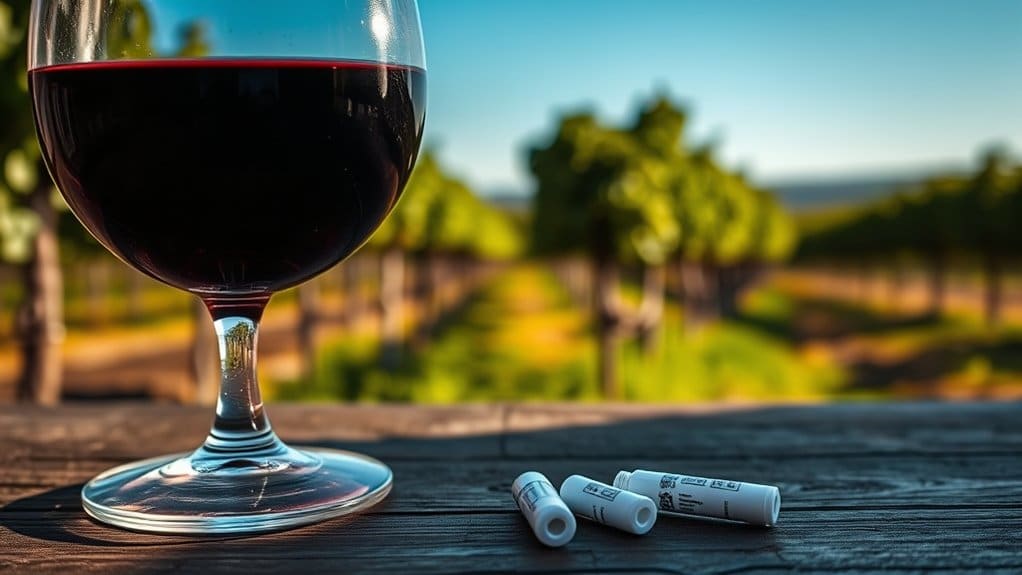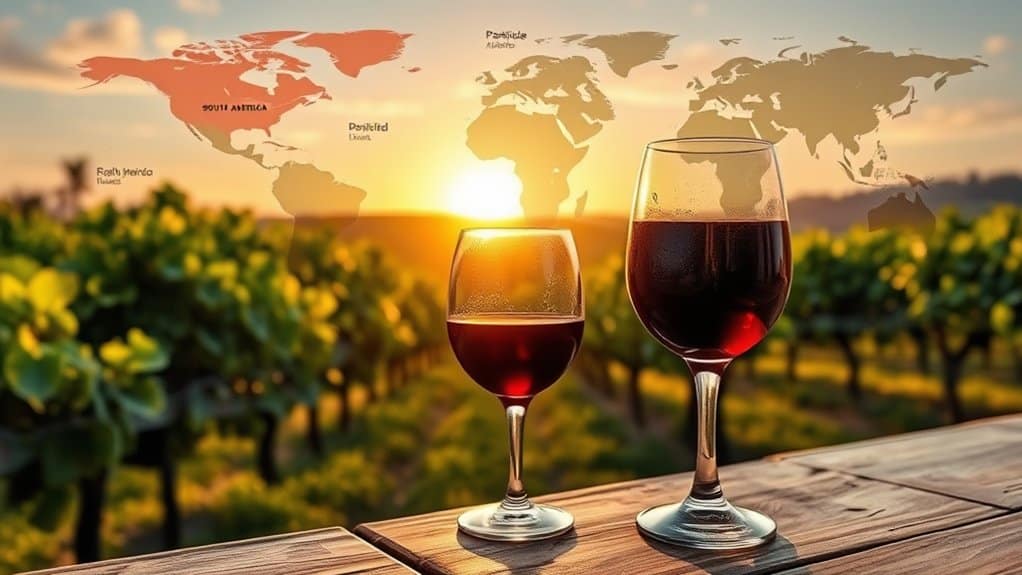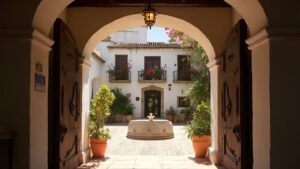Recent findings about pesticide residues in South American wines have stirred up quite a buzz in the wine world – and not the pleasant kind that comes after a glass of Malbec. While the region's favorable climate should theoretically reduce the need for chemical interventions, economic pressures tell a different story. The discovery raises questions about what exactly swirls beneath those deep reds and crisp whites, particularly as global consumers become increasingly conscious about what's in their glass.
Key Takeaways
- Studies have detected multiple pesticide residues in South American wines, particularly from major wine-producing regions in Chile and Argentina.
- Advanced detection methods reveal microscopic levels of chemical residues despite most wines meeting maximum legal limits.
- Economic pressures in South American vineyards lead to continued conventional pesticide use despite favorable climate conditions.
- Regional variations in testing standards and enforcement create challenges for consistent monitoring of wine safety across countries.
- Detection of multiple pesticides in single wine samples raises concerns about chemical interactions and potential health implications.
The Growing Concern Over Wine Safety in South America

While South American wines have gained worldwide recognition for their exceptional value and quality, a growing shadow looms over the industry as concerns about pesticide usage take center stage. As wine production continues to expand across Chile, Argentina, Brazil, and Uruguay, scrutiny over chemical applications has intensified, particularly in export markets.
Consumer consciousness regarding pesticide residues has sparked a significant shift in market dynamics, pushing producers to reevaluate their cultivation practices. While South American wine regions benefit from favorable climate conditions that naturally reduce the need for extensive pesticide use, economic pressures often drive conventional farming methods. According to Health Care Champions research published in industry journals, the findings have prompted increased safety monitoring and testing protocols. The delicate balance between maintaining affordable prices and ensuring safety standards has become a critical challenge for the industry, especially as international buyers demand stricter compliance to chemical residue limits.
Understanding Pesticide Residues in Regional Wines
The intricacies of pesticide residues in South American wines reveal a complicated interplay between regional practices, environmental factors, and regulatory oversight. Advanced pesticide detection methods now enable identification of residues at microscopic levels, yet the absence of unified standards across Uruguay, Brazil, Argentina, and Chile creates challenges in residue measurement and regulation. Similar to findings in France where fungicides were most common, testing reveals frequent detection of antifungal compounds in South American wine regions.
- Each country's unique climate conditions drive distinct pesticide application strategies
- Modern analytical techniques can detect residues at parts per billion levels
- Environmental factors like soil persistence and water contamination influence residue profiles
Regional variations in enforcement and testing protocols further compound the intricacy of monitoring wine safety. While some producers adopt organic and sustainable practices to minimize chemical inputs, others face economic pressures that influence their pest management choices, resulting in varying residue levels across South American wine regions.
Health Implications for Wine Consumers
Despite rigorous testing protocols and regulatory oversight, pesticide residues in South American wines present intricate health implications for consumers worldwide. While most wines comply with maximum residue levels, concerns persist about the synergistic effects of multiple chemical compounds interacting within the same bottle. Research indicates potential long-term health risks, particularly regarding carcinogenic properties of certain pesticides. The detection of up to six different pesticides in a single wine sample highlights the complexity of chemical interactions.
For those seeking alternatives, organic wines from South American vintners offer freedom from synthetic pesticide effects. Though regional studies specifically addressing wine consumption remain limited, global research suggests that conventional wines frequently contain residual chemicals. This data gap has prompted increased scrutiny of existing regulatory frameworks and growing consumer interest in organic alternatives, particularly as consciousness of cumulative exposure risks continues to escalate.
Comparing South American Wine Standards With Global Markets

As South American wine producers maneuver intricate international markets, significant disparities emerge between regional standards and global requirements. The absence of uniform regulations across South America creates challenges in meeting international market demands, particularly when competing with strictly regulated European producers.
- While South American wines offer competitive pricing and growing quality, they often face scrutiny due to varying pesticide testing standards
- Argentina and Chile lead regional exports but struggle to match the prestige of traditional wine-producing nations
- Market competitiveness relies heavily on popular varieties like Malbec and Carmenère, while quality certifications lag behind global standards
Argentina's Mendoza region has become particularly successful in meeting international standards through its renowned Malbec production, setting a benchmark for quality control in South American viticulture. Despite these challenges, South American wineries are adapting by implementing sustainable practices and seeking international certifications to enhance their position in premium markets, though regulatory harmonization remains a work in progress.
Moving Towards Sustainable Vineyard Practices
South American wineries are pioneering a remarkable shift toward sustainable vineyard practices, altering traditional agriculture into environmentally conscious operations. Leading this change are innovators like Emiliana Organic Vineyards in Chile, which has achieved full organic and biodynamic certification, while Uruguay's Giménez Méndez demonstrates the effectiveness of combined sustainable farming across generations. Their commitment to sustainability includes using cover crops and composting to maintain healthy soil ecosystems, following practices similar to established eco-friendly producers worldwide.
The movement extends beyond organic practices to encompass comprehensive ecosystem management. Wineries like Bodega Garzón and Viña Edén are implementing advanced water conservation systems, renewable energy solutions, and biodiversity preservation initiatives. These sustainable farming methods not only reduce environmental impact but also enhance wine quality. From living roofs hosting thousands of plants to LEED-certified facilities, South American vintners are proving that excellence in winemaking can coexist with ecological responsibility.



